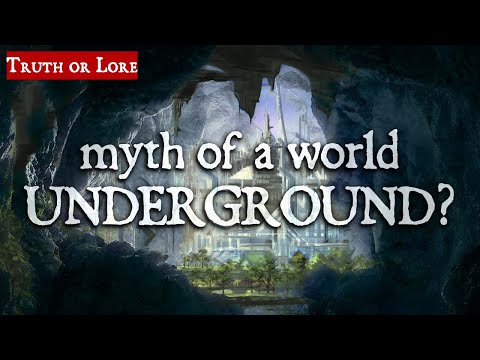
For centuries, the mysteries of what lies beneath the Earth’s surface have captivated human imagination. Tales of subterranean realms, complete with advanced civilizations and fantastic creatures, are a recurring theme in mythology and folklore from various cultures. Among these stories, the legend of Agartha stands out as particularly captivating. Said to be a hidden civilization located within the Earth itself, Agartha is often depicted as a utopian world beyond the reach of ordinary humans. But is there any truth to these claims? Or is Agartha merely a fascinating piece of lore?
### The Origins of the Agartha Legend
The concept of subterranean worlds exists in numerous mythologies. Greek and Hindu myths mention underground realms such as Hades and Patala. However, the specific idea of Agartha (sometimes spelled ‘Agharta’) arguably finds its roots more distinctly in 19th and early 20th-century occultist writings.
One pivotal figure who popularized the concept of Agartha in Western culture was Ferdinand Ossendowski, a Polish scientist and adventurer. In his 1922 book “Beasts, Men and Gods,” Ossendowski discusses his experiences in Asia where he learned about the Kingdom of Agharti from Buddhist lamas. According to these lamas, Agharti was a powerful realm that could influence the upper world’s fate.
Another significant proponent was French occultist Alexandre Saint-Yves d’Alveydre who introduced the Western world to his version called “Agarttha” in his book “Mission de l’Inde en Europe” published in 1886. He described it as an enlightened society underneath Asia, accessible via secret tunnels across various parts of the world.
### Description of Agartha
According to various sources like Saint-Yves d’Alveydre and later writers like Raymond Bernard (“The Hollow Earth”), Agartha is typically envisioned as a vast network containing millions who live under Earth’s surface. These residents are said to be guardians of ancient knowledge lost to surface dwellers through catastrophes over millennia like Atlantis sinking into the sea.
Agarthans are often portrayed as spiritually evolved beings with technology far surpassing our own; they use free energy devices and have eradicated disease in their society. Proponents argue that entrances to this underground kingdom can be found around the globe: Mount Shasta in California, Mammoth Cave in Kentucky, and even under the Sphinx in Egypt are reported gateways.
### Debunking or Rationalizing?
From a scientific perspective, there’s no verifiable evidence supporting an inner-Earth civilization capable of supporting life as we know it. Geologists point out that conditions within Earth grow increasingly inhospitable; temperature rises approximately 1 degree Celsius per every 40 meters downwards—which makes human life implausible deep beneath.
Furthermore, seismic activity consistently shows that below solid crust lies molten magma—not exactly prime real estate for hidden cities or advanced technologies imagined by believers.
### Enduring Appeal
Despite lacking hard evidence or scientific support—why does this myth persist? The story taps into universal longings for mystery and lost wisdom—a counterpoint against our surface world perceived flaws like political strife or ecological crisis. It invites us to imagine alternatives while challenging perceptions about our planet’s limits.
### Conclusion
While enjoyable as speculative fiction or metaphysical allegory—there’s scant actual support for literal interpretations concerning hidden civilizations like Agartha existing within Earth’s layers today. However, examining why such stories endure offers insightful reflections on human creativity; how myths serve psychological needs by providing hope that somewhere—whether deep down below or far across space—there might exist a perfect society unlike our own troubled one above ground.
